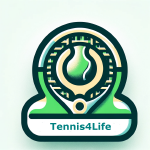Training Plan Revamp
Nathan Cleary, known for his intense training regimen, faces a crucial shift due to recurring hamstring injuries, a scenario that offers valuable lessons for tennis training. Cleary’s unmatched dedication, exemplified by kicking the ball around 300,000 times over 12 years, mirrors the rigorous physical preparation required in tennis. However, his experience highlights the risk of overtraining and the need for a balanced approach.
Cleary’s injuries this year have forced him to reconsider his training, emphasizing the importance of mental preparation in conjunction with physical workouts. This shift is particularly relevant for tennis players who often prioritize physical drills at the expense of mental training. Techniques like visualization and mental rehearsal, which Cleary plans to focus on more, can enhance performance without the physical strain that can lead to injuries.
For tennis players, Cleary’s situation underscores the significance of balancing intense physical drills with mental strategies. Incorporating visualization, mental rehearsal, and mindfulness can improve game performance while reducing the risk of overuse injuries. This holistic approach can be particularly beneficial during recovery periods, allowing players to stay mentally sharp while their bodies heal.
Cleary’s plan to consult specialists and visit renowned clinics to understand his biomechanics is another critical takeaway. Tennis players can benefit from regular consultations with sports medicine professionals to fine-tune their training regimens and prevent injuries. Understanding individual biomechanics can lead to personalized training programs that optimize performance and reduce injury risk.
Ultimately, Cleary’s experience serves as a reminder of the importance of a balanced training approach. By integrating mental strategies, consulting with specialists, and understanding personal biomechanics, tennis players can enhance their performance and longevity in the sport. This period of reflection and adjustment can turn setbacks into opportunities for growth and improvement, ensuring a more sustainable and successful tennis career.




